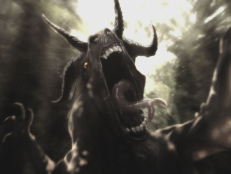Alien Sharks: The World’s Strangest Aquatic Creatures
These bizarre-looking fishes’ features are scarier than their bites.
![The rare goblin shark was caught by fishermen off Green Cape on the NSW south coast and was taken to the nearby town of Merimbula for examination, February 2, 2015. [via Getty Images/Fairfax Media]](http://travel.home.sndimg.com/content/dam/images/travel/fullset/2021/07/Getty-463033940-goblin-shark.png.rend.hgtvcom.616.462.suffix/1626474582473.png)
The rare goblin shark was caught by fishermen off Green Cape on the NSW south coast and was taken to the nearby town of Merimbula for examination, February 2, 2015. [via Getty Images/Fairfax Media]
Goblin Shark
The rare goblin shark is known as a “living fossil” because it was once thought to be extinct and its body has evolved very little over 125 million years. The most distinctive aspect of this deep-ocean shark is it’s bizarre, alien-like snout and jaw. According to Smithsonian Ocean, the goblin shark’s jaw can be quickly extended to the length of its snout to help it ambush and capture prey, such as squids and bony fish, in a technique called slingshot feeding.
![A preserved, fully-grown cookiecutter shark sits on display during the Girls in Ocean Science Conference in Dana Point on Saturday. The small fish sneaks up on its prey, sometimes as big as whales, and takes a bite out of them, leaving a cookie-shaped hole, before quickly swimming away. [via Getty Images/Mindy Schauer/Digital First Media/Orange County Register]](http://travel.home.sndimg.com/content/dam/images/travel/fullset/2021/07/Getty-1033472374-cookiecutter-shark.png.rend.hgtvcom.616.462.suffix/1626474589425.png)
A preserved, fully-grown cookiecutter shark sits on display during the Girls in Ocean Science Conference in Dana Point on Saturday. The small fish sneaks up on its prey, sometimes as big as whales, and takes a bite out of them, leaving a cookie-shaped hole, before quickly swimming away. [via Getty Images/Mindy Schauer/Digital First Media/Orange County Register]
Cookiecutter Shark
This parasitic shark measuring up to a maximum of 18 to 20 inches, feeds by attaching its suctorial lips to prey larger than itself, including white sharks, and then spinning around. The action releases cookie-shaped chunks of flesh for the shark to then devour without killing the host animal. Since they live in the deep ocean, these fish rarely encounter humans and there’s only one confirmed case of an attack in Hawaii involving a long-distance swimmer who was swimming between islands.

Basking Shark [via Discovery Inc.]
Basking Shark
While the basking shark can grow to as long as 45 feet and weigh up to 10,000 pounds, the world’s second largest fish isn’t exactly an aggressive and intimidating predator. This species uses its massive mouth to filter planktonic prey while feeding, much like whales. According to Oceana, a pregnant female basking shark’s gestation period is around three years and they usually give live birth to only several babies, which scientist believe are bigger than any other fish when born.
![A Carpenter Shark and a Southern Stingray circle around in Dangerous Lagoon as Ripley's Aquarium of Canada opened to the public. October 16, 2013. [via Getty Images/Bernard Weil/Toronto Star]](http://travel.home.sndimg.com/content/dam/images/travel/fullset/2021/07/Getty-185043562-carpenter-shark.png.rend.hgtvcom.616.462.suffix/1626474582416.png)
A Carpenter Shark and a Southern Stingray circle around in Dangerous Lagoon as Ripley's Aquarium of Canada opened to the public. October 16, 2013. [via Getty Images/Bernard Weil/Toronto Star]
Carpenter Shark
Carpenter sharks, also known as sawfish, actually belong to the ray family. The fish’s long flat nose resembles a saw blade thanks to its shape and sharp, pointy teeth. The carpenter shark swings its spiky nose to stun fish so it can then eat them using its mouth, which is located underneath its body.

Dwarf Lantern Shark
As its name implies, the dwarf lantern shark has two distinct features — it’s tiny size and its ability to glow in the dark. The rarely seen and little-studied species, believed to live off parts of South America’s northern coastline, is the smallest known shark on Earth, measuring between just over six inches and up to about eight. Photophores, organs that emit light, are scattered along its fins and belly and act as both a lure for the fish it feeds on in deeper, darker waters and as camouflage in sun-dappled shallower areas.
![In this handout picture released by Awashima Marine Park, a 1.6 meter long Frill shark swims in a tank after being found by a fisherman at a bay in Numazu, on January 21, 2007 in Numazu, Japan. [via Getty Images/Awashima Marine Park]](http://travel.home.sndimg.com/content/dam/images/travel/fullset/2021/07/Getty-73089370-frilled-frill-shark.png.rend.hgtvcom.616.462.suffix/1626474591746.png)
In this handout picture released by Awashima Marine Park, a 1.6 meter long Frill shark swims in a tank after being found by a fisherman at a bay in Numazu, on January 21, 2007 in Numazu, Japan. [via Getty Images/Awashima Marine Park]
Frilled Shark
Physically resembling an eel, the frilled shark makes its home in the Atlantic and Pacific Oceans. The fish gets its name from a pair of gills that completely cross its throat and its reputation from a bite that packs a punch since they have 300 three-pronged teeth arranged in 25 rows. “The teeth are constructed for grasping and from their peculiar shape and sharpness it would seem as if nothing that once came within their reach could escape them,” zoologist Samuel Garman wrote in 1884 of the shark’s terrifying mouth that also comes equipped with dermal denticles, or bristle-like scales.
![Spotted Wobbegong (Orectolobus maculatus), Orectolobidae, drawing. [via Getty Images/DeAgostini]](http://travel.home.sndimg.com/content/dam/images/travel/fullset/2021/07/Getty-504679705-spotted-wobbegong-sharks.png.rend.hgtvcom.616.462.suffix/1626474589891.png)
Spotted Wobbegong (Orectolobus maculatus), Orectolobidae, drawing. [via Getty Images/DeAgostini]
Spotted Wobbegong Sharks
The nocturnal spotted wobbegong sharks live in shallow waters, including around caves, reefs and peers, in the eastern Indian Ocean and South China Sea as well as off the coast of Queensland, Australia, and possibly Japan. Spots and fleshy tassels help them almost completely blend in with their surrounding so they can easily attack octopus, crab, sea bass and other bottom invertebrates and bony fish. According to the Georgia Aquarium, wobbegong is an Australian aboriginal word speculated to possibly mean “living rock.”
![Sea Monster, Chimaera monstrosa, British fishes, Donovan, E. (Edward), 1768-1837, (Author) [via Getty Images/Sepia Times/Universal Images Group]](http://travel.home.sndimg.com/content/dam/images/travel/fullset/2021/07/Getty-1149302094-pointy-nosed-blue-chimaera.png.rend.hgtvcom.616.462.suffix/1626474581990.png)
Sea Monster, Chimaera monstrosa, British fishes, Donovan, E. (Edward), 1768-1837, (Author) [via Getty Images/Sepia Times/Universal Images Group]
The Pointy-Nosed Blue Chimaera
The pointy-nosed blue chimaera, also known as the abyssal ghostshark, was recently caught on camera — believed to be for the first time — while swimming in its natural habitat in the deep sea. The species is known to live in the Southern Hemisphere but was recently observed in the Pacific Ocean near California and Hawaii. Pale-gray to pale-blue, these underwater creatures are likely up to four feet in length and have on their heads what may be food-finding sensory organs resembling a series of dots.
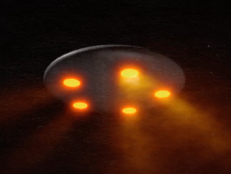
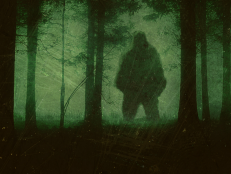


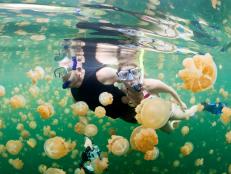















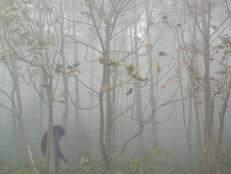






.jpg.rend.hgtvcom.231.174.suffix/1674758726773.jpeg)

